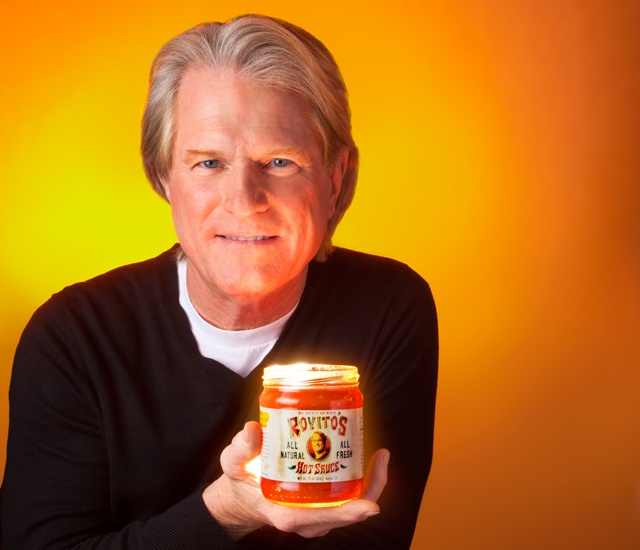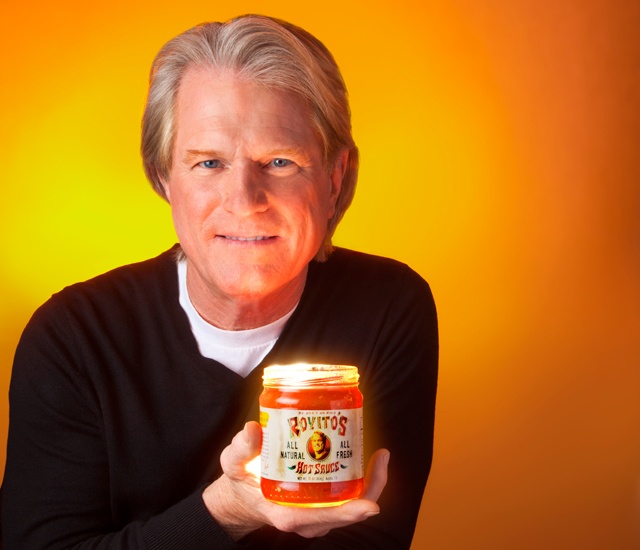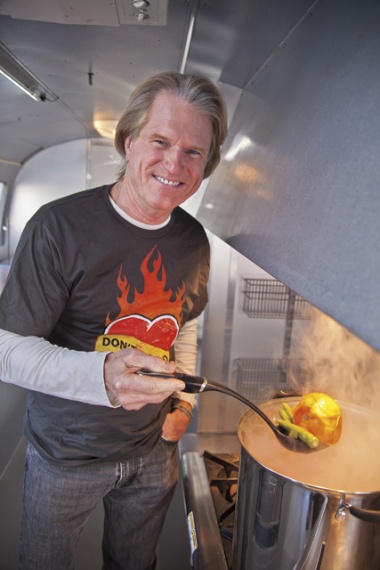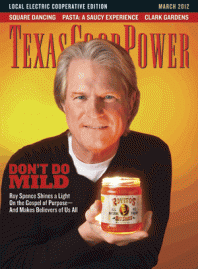On December 18, 1965, dark storm clouds rolled in over College Station’s Kyle Field. At kickoff, a cold, pouring rain drove home the dilemma facing the undefeated Brownwood Lions: how to stop—or, more realistically, try to contain—Bridge City’s star running back Steve Worster in the Class 3A state championship high school football game.
Brownwood Coach Gordon Wood knew well the frightening scouting report: Worster, a 6-foot, 210-pound brute of a back with blazing 10.5-second speed in the 100-yard dash, was so strong that it sometimes took three defenders to bring him down. Worster was, Wood simply stated, a vicious runner.
Tension on the Brownwood sideline heightened as Bridge City won the coin toss and elected to receive. The call was predictable: On the first play from scrimmage, Worster, who had rushed for 1,293 yards and scored 22 touchdowns that season, took the handoff and headed around right end. But what happened next became the stuff of lore.
A 160-pound lightning bolt named Roy Spence came flying in from his defensive back position, delivering a crushing hit at the knees that thundered across the stadium. Worster was down, in the mud, and he and the Cardinals, for all practical purposes, never got back up. As Wood described in his 2001 autobiography—Coach of the Century, as told to author John Carver—Spence’s “punishing blow set the tone … many times maroon-clad players swarmed into Bridge City’s backfield to gang-tackle Worster before he reached the line of scrimmage.”
The Lions held Worster, a future University of Texas All-American fullback, to 87 yards en route to a 14-0 win, giving Wood his fourth of an eventual nine career state high school football titles.
Almost half a century has passed since a skinny cornerback waylaid one of the greatest running backs in state of Texas football history. But the legend continues. Roy Spence, per a mantra passed down from his father, does not do anything mild. Oh, no, no, no. This is a guy who’s never been afraid to tackle anything, or anyone.
‘Force of Nature’
Roll the game film, please. In 1971, Spence and five fellow University of Texas graduates co-founded GSD&M, an Austin-based advertising firm. They had no clients and virtually no money. Spence couldn’t afford an apartment and slept on a mattress under the art table at the agency’s first headquarters—a tiny, one-room office space that he and his partners rented for $85 a month.
Spence bathed in the swimming pool at the health club next door and kept his shaving kit out in plain sight. Partner Judy Trabulsi worried constantly that with such evidence, they’d get kicked out because the business lease she signed stated quite clearly: no permanent residents. Of course, the staff was pretty much there all the time anyway, working seven days a week in a standard attire of jeans, shorts, sandals and tie-dyed shirts. Spence often met clients with his long hair pulled back in a ponytail.
Now here it is 2012, and time has wonderfully flown for Spence, the man known as “Reverend Roy,” who’s fond of saying: “Sometimes, you have to jump off the building and build the wings on the way down.” He’s leapt, all right—again and again—proving that parachutes, in some cases, might be overrated.
The 63-year-old Spence—who helped handle quarterback duties for Brownwood—is still calling the signals. But now, as chairman of GSD&M Idea City, an internationally renowned marketing and advertising firm, his huddle holds some of the biggest-name players in the world: Southwest Airlines. Goodyear. The U.S. Air Force. The PGA Tour. And he has helped grow such high-profile brands as BMW and Walmart in guiding an agency that regularly oversees multimillion-dollar accounts.
But the 5-foot-10-inch Spence, the little guy who could on the football field, has not forgotten his West Texas roots. Fiercely proud of his rural upbringing, he’s a champion for the entrepreneurial underdogs: the small-business operators who fall under a concept he calls “Stand Tall For Small.” It’s a principle based on community and the undergirding of Texas that draws its strength from its rural vitality—from member-owned electric cooperatives putting people first, to farmers, ranchers and small-business owners.
Build from this base, Spence says, and you’ll see a rebirth of the American entrepreneurial dream.
It’s a philosophy that matches the tenacity of Spence, who says of his famous tackle 47 years ago: “I was fast and had no fear.” So the challenge for followers is to keep up with Spence, a rebel who once stood on a table at a party, tequila bottle in hand, and shouted: “We ride at dawn like the breaking wind! Who’s with me?”
Well, Southwest Airlines founder Herb Kelleher, for one, who paints a picture of what Spence, as a storm, would do to helpless boats on the water. “He’s such a force of nature,” says the 80-year-old Kelleher, who’s no floating lily pad himself as Southwest’s raucously funny, chain-smoking chairman emeritus. “He reminds me of a typhoon crossing the China Sea and driving sampans and junks before it.”
No doubt about it: Spence, named “Adman of the Century” by Texas Monthly in 1999, sets the bar high. As a globe-trotting advertising, consulting and motivational speaking guru, Spence works with a diverse group of clients, ranging from the Clinton Global Initiative, to Fortune 500 company executives, to corporate CEOs in Portugal, a country staggering under the weight of a financial crisis.
He visits frequently with former President Bill Clinton; and in the wakes of the 2004 Asian tsunami, hurricanes Katrina (2005) and Ike (2008) and the 2010 Haiti earthquake, he helped create relief-effort public service announcements with Clinton and former Presidents George H.W. Bush and George W. Bush.
Spence’s light shines far and wide, and it’s little wonder that so many leaders from across a broad spectrum—including, recently, Texas Electric Cooperatives President/CEO Mike Williams—have jumped onboard with Reverend Roy, the golden-maned visionary with the Midas touch preaching the gospel of his favorite word: purpose.
Simply put, Spence writes in his latest book—It’s Not What You Sell, It’s What You Stand For: Why Every Extraordinary Business Is Driven By Purpose (Penguin Group, 2009, co-authored with Haley Rushing)—purpose is a definitive statement about the difference you’re trying to make in the world. Find and unleash your purpose, and you’ll make money, often beyond your wildest dreams. But far more important, you’ll enrich the lives of others.
It’s a message with a magnetic appeal, attracting such corporate icons as Kelleher, an early convert who seized upon Spence’s creativity during the early 1980s when many Americans could not afford to fly commercially. One day, Spence said to Kelleher: “You know what you’re doing? You’re democratizing the skies.” Kelleher loved it, and the line stuck—as have legions of loyal Southwest customers.
That message of purpose resonates with Williams as well, who keeps a copy of Spence’s book on his desk. Williams, at the helm of TEC, a statewide association that oversees the interests of 76 electric co-ops and publishes this magazine, has taken on a new leadership role as chairman of the 21st Century Electric Cooperatives Committee. The 13-member national group is tasked with determining how to ensure that electric cooperatives and the communities they serve remain sustainable and successful in the 21st century.
Williams says the challenge for co-ops is not to answer the “what” and “how,” but to start with the “why—our real purpose.” And what better person to bring into this crucial conversation, he says, than Spence, a friend whom Williams invited to deliver the keynote speech at the committee’s inaugural meeting in January in Los Angeles (see “Shining a Light on Electric Co-ops’ Dynamic Roles,” Page 12).
“Roy and his team are uniquely qualified to facilitate a discussion about purpose,” Williams says. “He understands electric cooperative values because he grew up with them. Just like these co-ops, he is the real deal.”
Ideas: ‘He Shoots ’Em Out Like a Fountain in Rome’
Many complex layers make up Roy Spence, a man profoundly influenced by family and experience who serves as keeper of his father’s flame: “Don’t Do Mild,” a motto for life and the trademarked slogan for Royito’s Hot Sauce, made from his dad’s recipe. The hot sauce, which bears Spence’s childhood nickname, serves as co-sponsor of an annual $5,000 award that goes to an entrepreneur following his or her passion and demonstrating a purpose beyond making money (see “I Want to Change the World,” Page 10).
Spence, whose mother, the late Ruth Griffin Spence, was his high school civics teacher, considers the world his classroom. And his three children—his “next-generation dreamers”—are following in his footsteps. Shay Spence, a senior at Tulane University, is working on a business plan with his dad to introduce the Austin-based Alamo Drafthouse movie franchise to Washington, D.C.
His oldest daughter, 32-year-old Courtney Spence, is the executive director of Austin-based Students of the World, an organization she founded in 1999 that focuses on humanitarian work.
And 28-year-old Ashley Spence Clauer is opening Wanderlust Yoga in Austin. Her spontaneously creative dad—who else?—came up with the studio’s motto: “Breathe In, Rock Out.”
Spence’s passion—there’s really no way to exaggerate the spark he brings into a room—burns like a lightbulb over his head. As ideas go, “He shoots ’em out like a fountain in Rome,” Kelleher says.
Let’s flash back to 1990, when GSD&M waged an all-out advertising war against its Dallas-based archrival, The Richards Group, to keep the prized Southwest Airlines account it had first captured in 1981. Heading into the final showdown, Spence gambled by spending at least $100,000 on shooting and editing 15 new commercials, ditching the safer and less expensive storyboard pitch.
On the morning of the final presentation, per Spence’s arrangement, two chartered buses carrying GSD&M employees arrived at Southwest’s Dallas headquarters. That afternoon, immediately following their pitch, Spence and partners Trabulsi and Tim McClure and Creative Director Wally Williams escorted Kelleher to a balcony overlooking nearly 200 GSD&M employees gathered below, all wearing T-shirts that read “Together We Stand.”
Tears rolled down Kelleher’s cheeks as the group started to sing “Stand By Me.”
‘She Was Pushing Me’
Spend just a little time with Reverend Roy, and you’ll likely walk away thinking, “Well, maybe I really could (fill in the blank) write that book, start that business, travel to Paris, grow a garden, get fit, learn to play the drums …”
He’s a man of equal parts humility and confidence who’s concerned by what he calls cultural hug gaps and thank-you gaps, believes fervently in owning his mistakes—“You gotta fess up when you mess up”—and fair competition: “It’s not winning at any cost, but if you’re going to play, you play to win.”
He’s a dream of a boss who brings flowers to five key women on his staff every Monday morning. And he brings his 11-year-old black Labrador retriever, Miss Ellie, to work, where she romps with Trabulsi’s dog, a sheltie named Luca.
And Spence, fair warning, is a hugger of the bear-hug variety: no weak, sideways, arm-around-the-shoulder stuff going on here. He dedicates his newest book—The 10 Essential Hugs of Life, still in draft form and not scheduled for publication—to his father, Roy Milam Spence Sr., who died in 2009 at the age of 95. Spence credits his father, a World War II veteran and charismatic salesman, with teaching him the art of conversation and how to love people.
Spence Sr. grew up in the border town of Eagle Pass, learning to speak Spanish before English. As a boy, Roy sometimes accompanied his dad on visits back to Eagle Pass and Piedras Negras, Mexico, just across the Rio Grande. The 6-foot-5-inch “Big Roy,” as he was known, was a popular personality in the marketplaces where he hugged everyone he met. And every time “Little Roy” heard his father say “Este es mi hijo, Royito”—“This is my son …”—the boy got his share of hugs, too.
But Spence, the youngest of three children, cites no greater influence than his oldest sister, Susan, who was born with spina bifida, a birth defect in which the backbone and spinal canal do not close before birth.
As children, Roy and his other sister, Mary Gordon Spence—now an Austin-based writer, humorist and speaker—pushed Susan everywhere in her wheelchair. Roy tied Susan’s wheelchair to his bike to haul her to school, and he and Mary Gordon fashioned a seatbelt to keep her from falling out.
As an adult, Susan attended a junior college and lived independently in San Antonio. She died in 1992 at the age of 47—living almost half a century longer than the two weeks doctors gave her. “For 30 years, I pushed her, but actually she was pushing me,” says her little brother, who makes a living at pulling others toward their hopes and dreams.
For his personal journeys, Spence relies on a pedometer—his “curiosity meter.” If he hasn’t logged 10,000 to 12,000 steps a day (five to six miles), he’s sat behind his desk too long and not talked to enough people.
“I used to think if I didn’t know where I was going, I’d never be lost,” Spence says. “And then I realized if I didn’t know where I was going, I’d never be found. You find yourself getting lost in the service of others.”
——————–
Camille Wheeler, associate editor




